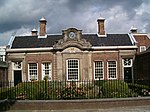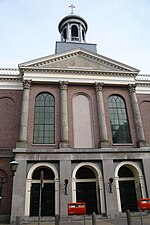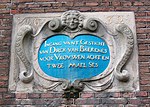Haarlem railway station
1839 establishments in the NetherlandsArt Nouveau architecture in the NetherlandsArt Nouveau railway stationsBuildings and structures completed in 1908Buildings and structures in Haarlem ... and 4 more
Railway stations in North HollandRailway stations in the Netherlands opened in 1839Railway stations on the Oude LijnRijksmonuments in Haarlem

Haarlem railway station is located in Haarlem in North Holland, Netherlands. The station opened at September 20, 1839, on the Amsterdam–Rotterdam railway, the first railway line in the Netherlands. The station building itself is a rijksmonument.
Excerpt from the Wikipedia article Haarlem railway station (License: CC BY-SA 3.0, Authors, Images).Haarlem railway station
Stationsplein, Haarlem
Geographical coordinates (GPS) Address Nearby Places Show on map
Geographical coordinates (GPS)
| Latitude | Longitude |
|---|---|
| N 52.387777777778 ° | E 4.6388888888889 ° |
Address
1
Stationsplein
2011 LR Haarlem (Haarlem)
North Holland, Netherlands
Open on Google Maps











